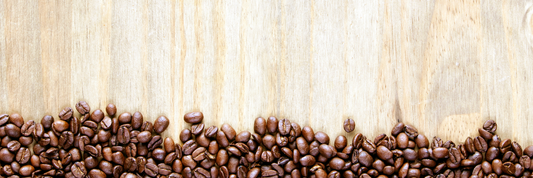In the world of flexible packaging, rollstock and pouches are among the most popular choices for a wide range of industries. Choosing the right type of packaging is essential for meeting product requirements, optimizing efficiency, and achieving sustainability goals. Both rollstock and pouches come with their unique advantages and trade-offs, making them suitable for different business needs. This guide will provide an in-depth comparison of rollstock and pouches to help you make an informed decision for your business.
- Stand Up Pouches: The Versatile, Eco-Friendly Packaging Solution for Every Industry
- Optimizing Packaging with Side Gusset Pouches: A Modern Solution for Your Products
- Matte vs. Glossy Finish for Pouch Packaging: Which Is Better for Your Brand?
Understanding the Basics: Rollstock and Pouches Defined
What is Rollstock Packaging?
Rollstock refers to a continuous roll of flexible film used in packaging processes. This type of packaging is typically unformed and is crucial in creating various package shapes through machines.
Rollstock is primarily used with form-fill-seal (FFS) machines, which automate the process of filling and sealing packages. These machines pull the roll of film from a spool, form it into a pouch, fill it with the product, and seal it in one continuous operation.
Typical applications:
- Dry foods: Such as cereals and pasta, which benefit from the extended shelf life offered by rollstock.
- Pet food: Where durability is key to protect the contents.
- Snacks: Often packaged in single servings for convenience.
- Medical products: Where precision in packaging is critical to maintain product integrity.
The defining characteristic of rollstock is its continuous roll of flexible packaging film, making it suitable for high-volume production.
What are Pouches?
Pouches are pre-formed flexible packaging containers that hold various products. These containers come in different shapes and sizes, tailored to specific products.
Pouches are typically filled and sealed using various methods, which can include heat sealing or adhesives, depending on the product within. This versatility makes pouches ideal for many types of content.
Typical applications:
- Liquids: Such as sauces and beverages, which require leak-proof solutions.
- Powders: Like protein powders or spices that need a protective barrier.
- Snacks: Often seen in ready-to-eat formats.
- Premium products: With advanced features that enhance shelf appeal.

Key Differences Between Rollstock and Pouches
Equipment and Machinery
Rollstock:
Using rollstock requires an investment in form-fill-seal machines, specifically vertical (VFFS) or horizontal (HFFS) types. While the initial cost may be higher, this equipment allows for mass production and efficiency.
Pouches:
Pouch filling can be accomplished using simpler machinery or could even be done manually in smaller operations. This flexibility allows for lower upfront costs, especially in situations where production volume varies.
Cost-Effectiveness
Rollstock:
One of the main advantages of rollstock is its lower material cost per package, especially at higher production volumes. This can lead to significant savings in large-scale operations.
Pouches:
Conversely, pouches generally have a higher unit cost. However, the initial investment in equipment is often lower. This aspect can make pouches a more attractive option for small businesses or those testing new products.
Production Flexibility
Rollstock:
Rollstock offers high adaptability for different sizes and shapes within the limitations of the filling machines. This can be beneficial when manufacturers need to switch package designs frequently.
Pouches:
Pouches allow for easy transitions between various pre-made formats, making it simple to switch from one product line to another, which is particularly useful during seasonal shifts in product offerings.
Storage and Transportation
Rollstock:
As rollstock is wound into a compact roll form, it requires significantly less storage space compared to individual pouches. This makes it easier to manage inventory in warehouses.
Pouches:
Pouches, depending on their size and type, typically take up more storage space. This factor needs to be considered when planning logistics, especially for larger product lines.
Printing and Customization
Rollstock:
Continuous printing allows for high design flexibility across the roll. This means that manufacturers can easily change graphics and branding to suit different products, which can be a real advantage in competitive markets.
Pouches:
Pouches offer various printing options, though the designs are usually printed during the manufacturing process. While there are still plenty of customization options, they can be less flexible than rollstock.
Food Packaging for Frozen Food: Best Materials, Designs, and Trends
Packaging Accuracy and Consistency
Rollstock:
The automated process used in rollstock packaging usually results in higher accuracy and consistency. This is particularly vital for products that require precise fill quantities and seals.
Pouches:
Although pouches can also be efficient, there may be slight variations in the fill and seal process. Factors like manual handling can impact overall consistency, particularly in smaller production runs.
Rollstock:
Rollstock’s ability to maintain high packaging accuracy stems from its continuous production method, making it a reliable choice for many manufacturers.

Product Protection and Shelf Life
Rollstock:
Rollstock provides good barrier properties, protecting products from moisture and oxygen to extend shelf life. This is crucial for many types of food products where freshness is a priority.
Pouches:
Many pouches can be produced with advanced barrier materials, offering enhanced product protection. This feature is particularly beneficial for products sensitive to environmental.
Advantages and Disadvantages: A Detailed Look
Advantages of Rollstock Packaging
Cost-effective for large production runs.
Rollstock packaging is notably beneficial for businesses with high production volumes. It for lower per-unit costs the material is produced in large rolls and efficiently processed in bulk, leading to significant savings over time.
Highly customizable in terms of size and shape.
With rollstock, manufacturers can tailor their packaging to fit various product dimensions, enhancing brand appeal and optimizing shelf space. This flexibility supports diverse product lines while maintaining a cohesive brand image.
Efficient use of packaging material.
Rollstock minimizes waste, as the production process is designed to utilize materials more efficiently compared to other packaging methods. This efficiency not only reduces environmental impact but also helps cut costs.
High packaging speed and accuracy.
The automated processes associated with rollstock packaging allow for rapid production speeds without sacrificing precision. High-speed machinery ensures that packaging is done accurately and consistently, supporting tight timelines.
Flexible design changes without stopping the machine.
One of the standout features of rollstock technology is its ability to accommodate design changes with minimal downtime. This can enhance responsiveness to market trends or consumer preferences, allowing companies to swiftly adjust their packaging without major disruptions.
Disadvantages of Rollstock Packaging

Higher initial investment in machinery.
While rollstock offers many long-term benefits, the upfront costs for machinery and equipment can be substantial. This barrier can be daunting for smaller businesses with limited budgets.
Requires technical expertise for machine operation and maintenance.
Operating and maintaining rollstock machinery demands specific technical skills. Companies may need to invest in training or hire specialized personnel, adding to operational costs.
Less suitable for very small production volumes.
For businesses that operate with low production runs, rollstock may not be the most viable option. The machinery setup and material requirements might not justify the investment for smaller-scale production.
Advantages of Pouch Packaging
Lower initial investment in equipment.
One of the most significant advantages of pouch packaging is its accessibility. The initial costs for equipment are generally lower compared to rollstock, making it an attractive option for startups or small businesses.
Wide variety of pre-made pouch options available.
Pouch packaging offers an extensive range of pre-made designs, including different materials and styles. This variety allows businesses to select pouches that best align with their product's needs and consumer preferences.
Good for smaller production runs and diverse product lines.
Pouches are particularly well-suited for companies with varied product offerings and lower production volumes. They provide the flexibility needed to manage multiple products without committing to large-scale production.
Consumer-friendly features like zippers and spouts.
Modern pouches often come with convenient features such as resealable zippers and spouts for easy pouring, which appeal to consumers looking for usability. These attributes can enhance the overall customer experience and increase product satisfaction.
Wide variety of features like zippers, spouts, windows.
Pouch packaging can incorporate numerous functional and aesthetic features. This versatility allows brands to differentiate their products and cater to specific customer needs, enhancing marketability.
Different Types of Packaging and Their Uses – Best Packaging Solutions for Your Business
Disadvantages of Pouch Packaging

Higher cost per unit compared to rollstock for large volumes.
If you're producing at a large scale, the cost involved with pouch packaging can escalate. Companies may find that the per-unit price becomes less favorable as production volumes increase.
Requires more storage space for different pouch types.
Given the variety of pouch options available, businesses may need to stock multiple types to adequately meet their product needs. This can consume valuable warehouse space and add complexity to inventory management.
Less control over the initial pouch manufacturing process.
With pre-made pouches, manufacturers often lack direct control over the production of the pouches themselves. This can lead to inconsistencies in quality or changes that may not align with the producer's vision.
Choosing the Right Packaging Solution for Your Needs
Factors to Consider
Production volume.
Understanding your production volume is essential. If you expect high demand, rollstock may be preferable. Conversely, lower runs may benefit from pouches.
Budget and investment capacity.
Assess your financial resources. A limited budget may steer you toward pouch packaging initially, while long-term goals might justify investing in rollstock machinery.
Product type and characteristics.
The nature of your product can dictate the best packaging choice. Smooth or fragile items may require the unique protective features of pouches, whereas bulkier products might fit better in rollstock.
Shelf life requirements.
Consider how long your product needs to last. Pouch packaging often provides excellent barrier properties, making it suitable for products requiring longer shelf lives.
Desired packaging features and aesthetics.
Reflect on the visual impact of your packaging. Rollstock offers customization, but pouches can incorporate consumer-friendly features that appeal more directly to buyers.
Storage and transportation considerations.
Think about how your packaging choice will affect logistics. Pouches can be more flexible in shipping, but they might require more space than flat rollstock.
When to Choose Rollstock

High-volume production of similar products.
If your business model revolves around producing large quantities of a consistent product, rollstock is likely the ideal solution. It meets the demand for speed and efficiency.
Need for consistent and efficient packaging.
Companies prioritizing reliability and uniformity in their packaging should lean towards rollstock. This method ensures that every package meets the same quality standards.
Long-term cost savings are a priority.
Despite a higher initial investment, rollstock can lead to significant savings in the long run for businesses aiming at high throughput.
When to Choose Pouches
Lower production volumes or diverse product lines.
Pouch packaging is ideal for businesses with a variety of product types or lower output demands. It offers the flexibility to adapt without significant overhead costs.
Need for specific pouch features and designs.
If your products require unique features like zippers or specific designs for better consumer interaction, pouches provide an array of options.
Lower initial investment is crucial.
For startups or businesses needing to retain cash flow, opting for pouches can be an economically sound decision without the hefty machinery costs
Real-World Applications and Examples
Examples of Products Packaged with Rollstock
Rollstock packaging is a flexible, cost-effective solution primarily utilized in high-volume applications across various sectors. Here are some notable products packaged using rollstock:
- Snack Foods (Chips, Candy Bars): The flexible nature of rollstock makes it ideal for snack foods that require quick production and high turnover. Chips and candy bars are often sealed in rollstock to preserve freshness while allowing for attractive branding on the packaging.
- Dry Goods (Coffee, Grains, Powders): For items like coffee or flour, rollstock allows for air-tight packaging that maintains the sterility and flavor of the product. This packaging method often includes features like zippers for resealing.
- Frozen Foods: Rollstock is frequently used in frozen food packaging, where the ability to withstand extreme temperatures while providing a moisture barrier is crucial. Items such as frozen vegetables and ready meals utilize rollstock for both convenience and durability.
- Pet Food: The pet food industry benefits significantly from rollstock, which can be tailored to various sizes and formats. This type of packaging helps preserve the nutritional value and freshness of the food while being easy to handle and store.
- Medical Supplies: In the medical field, rollstock packaging is used for sterile items, ensuring contamination is minimized. The materials utilized are specifically designed to meet strict health regulations.
Examples of Products Packaged in Pouches

Pouches offer versatility and user-friendly features that cater to various types of products and consumer needs. Here are examples of products typically found in pouches:
- Liquids (Beverages, Sauces): Pouches are increasingly popular for liquids due to their portability and spill-proof designs. Beverages like smoothies and sauces are often packaged this way for easier transport and consumption.
- Granular Products (Spices, Supplements): Many spices and powdered supplements come in pouches, which allow users to easily pour and measure their contents. The resealable feature of many pouches helps maintain freshness.
- Pet Treats: Pet treats are frequently sold in pouches because they can be designed for easy opening and resealing, enhancing convenience for pet owners while keeping the treats fresh.
- Cosmetics and Personal Care Products: The pouch format is particularly popular in the cosmetics industry. Sample sizes of lotions, creams, and serums are often packaged in pouches for ease of use and to encourage trials by consumers.
- Ready-to-Eat Meals: Convenience is key for ready-to-eat meals, and pouches provide lightweight, space-saving packaging. These pouches can often be microwaved, making meal preparation straightforward.
Conclusion
When deciding between rollstock and pouches, it's essential to consider the specific needs of your product and business. While rollstock offers cost-effectiveness and efficiency for high volumes, pouches provide flexibility and ease of use. Each packaging type has its advantages, and aligning your choice with the product's characteristics and the target audience's needs is vital for successful packaging.
Frequently Asked Questions (FAQ)
Q1: Is rollstock packaging cheaper than using pre-made pouches in the long run
Answer: Generally, yes, for high volumes, rollstock is more cost-effective due to lower material costs per unit. Businesses with significant production runs often find rollstock to be the more economical choice, particularly with standardized products.
Q2: What types of businesses benefit most from using rollstock packaging?
Answer: Businesses that have high production volumes and standardized product lines, such as snack food manufacturers and pet food companies, benefit most from rollstock packaging. Its efficiency is particularly important in keeping up with demand.
Q3: Are pouches more environmentally friendly than rollstock?
Answer: It depends on the materials used. Pouches can sometimes use less material than rigid containers, and advancements in sustainable films are available for both options. It's important to evaluate the materials and recycling possibilities for each packaging type.





